On spoons
- rosemarydearman1
- Oct 15, 2019
- 7 min read
"The book is like the spoon, scissors, the hammer, the wheel. Once invented it cannot be improved. You cannot make a spoon that is better than a spoon” Umberto Eco
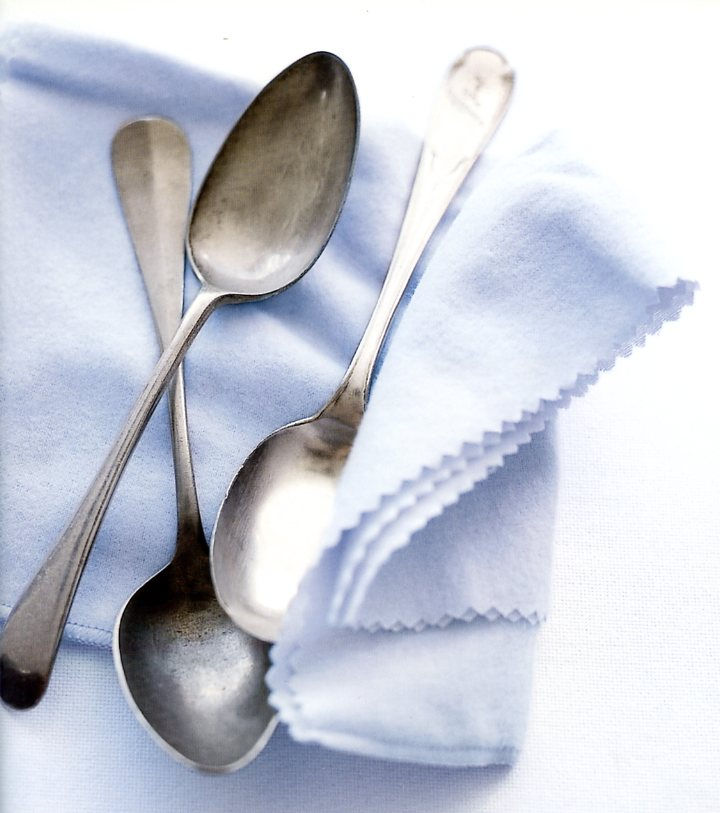
As I was putting away my Donna Hay lucky dip book yesterday I flipped through the pages, and came across this photograph before the final section of the book - the Glossary and Index. I was struck by the beauty of it. How three very humble, ordinary even, spoons and a simple white napkin could be so arresting. Is it the subtle shade of blue, the way the spoons are arranged, the way the napkin is arranged - like that piece of paper in yesterday's photo of arancini? If Donna Hay could be said to be a colour it is pale blue and white - her website features the same colours. I guess they are the colours of serenity, calm, style, simplicity - basic. And the spoons are the same. Very clever marketing.
Anyway here is an Inspirations from Art post. On spoons.
They are very ancient. We might have started eating things with our hands but the Ancient Egyptians, for example, had spoons. Not always for eating. You can do a lot of things with spoons - mostly to do with cooking, serving and eating food, measuring too, but there are lots of other uses for spoons. It's a bit like the how many things can you do with a paper clip question. I wonder what, in fact, the first use for a spoon was. After all you can eat any solid kind of food with your hands - people still do - even here. Indeed it is a trendy thing - finger food. And a spoon is not all that useful for cutting things. Liquids though are a different case. I wonder when people first started cooking things in liquids, and eating the liquids too. At a pinch you could eat cold liquids with your hands, though you would have to be careful not to lose half of it through your fingers. But hot liquid - no. Another topic that one though.
I came across an interesting article in The Guardian that looked at the history of making spoons by one Mark Miodownik. His first paragraph talks a little about this and also introduces the notion of the importance of what the spoon is made of.
"The stone age equivalent of Jamie Oliver and Mary Berry were handicapped by the lack of cooking utensils, and also ate with their hands. When the copper age arrived, it delivered better tools for cooking, but not for eating. Copper is poor material for making spoons because it has a very strong taste. The bronze age brought with it stronger metals but they did not taste any better, so eating with the hands continued in most parts of the world except in east Asia. There, they cracked the problem by developing chopsticks. That the rest of the world didn’t adopt this remarkable invention is odd, especially when you consider that metal cutlery that didn’t have a taste, took more than another 6,000 years to develop."
It turns out that gold is actually the best material for a spoon - it is inert and has no taste. Well plastic too - though it seems to me that plastic does have a kind of taste, but as somebody else pointed out plastic is sort of greasy, and really not somehow a pleasant experience. Maybe it's a snobby thing - the association of babies, aeroplane food and food halls. Practical but not pleasant. Gold, of course, is not practical. Who can afford gold?
"the shine and glitter of cutlery are an important part of the experience of eating." Mark Miodownik

Silver - in some ways the most prized of kitchen cutlery also has an unpleasant taste according to a gathering in London who tasted their way through a meal whose purpose was to test out the differing metals to see which tasted best. Indeed silver came out almost at the bottom. Zinc, tin, copper, bronze, brass - none of them good. As Mark Miodownik says it took all those thousands of years before they discovered stainless steel - which is relatively inert and which is the material from which most of our cutlery is made these days. Wood is Ok of course, but tends to splinter and ceramic tends to break. Ditto for glass.
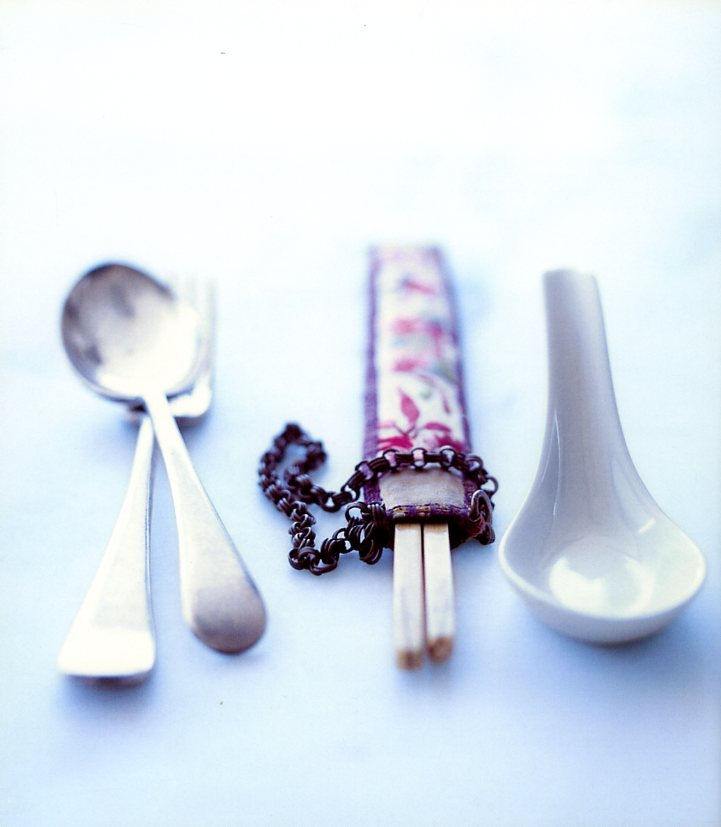
So yes indeed - why did we not all go for chopsticks? And not even everywhere in South-east Asia are chopsticks the traditional eating implements, so its not just a question of distance. In India and parts of the Middle East it's still polite to eat with your hands and I think that in Thailand they use spoons.
And here at the other end of Donna Hay's little book are the fundamental eating implements of the world today - minus the hands of course. The chopsticks look almost holy with that chain don't they? Pale blue and white again.
I have some Chinese kind of spoons too, but mine are a bit larger than the Chinese soup spoon. I suspect they are probably meant to be spoon rests. I tend to use them for things like dukkah or tasting portions of olive oil. But it is interesting is it not that China seems to have gone for 'natural' materials like wood, ivory, ceramics rather than metals, when it comes to eating?
Spoons scoop things up - so in primitive times and primitive societies you might also find things like shells, seed pods, hollowed out wood, bamboo used for the purpose.
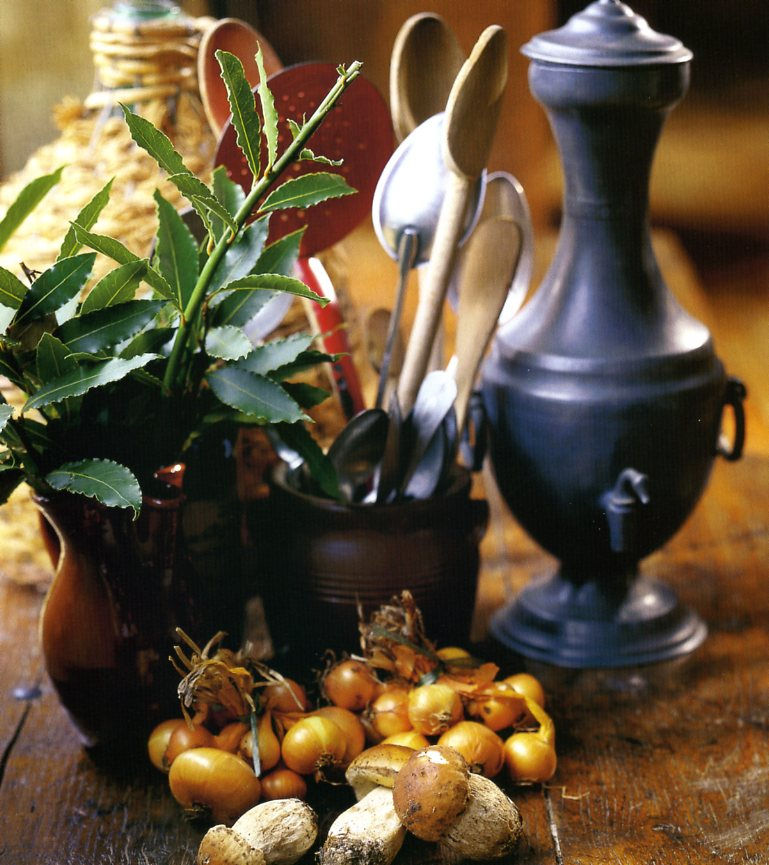
As to the preparation of food - well where would we be without a range of wooden spoons and spatulas? These too are aesthetically pleasing - the picture at right is from one of Stephanie Alexander's coffee table books - Cooking and Travelling in South-West France. I say it's a coffee table book because it is filled with stunning photography of the recipes, the area and its people, but also of implements and items bought from the wonderful 'brocantes' shops of France. Second-hand shops - huge barns of places stacked to the brim with trash and treasure. Lots of it from kitchens. And many of the photographs in this book feature some of her finds.
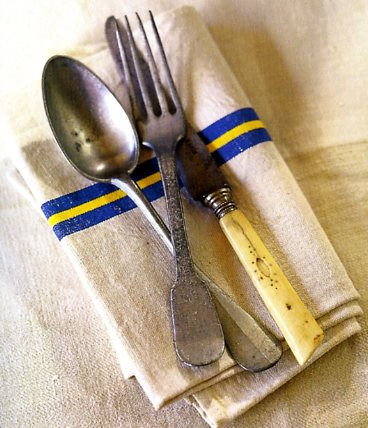
I wonder how many cookbooks have photographs of their food with an artfully placed spoon, fork or knife? Stephanie's had several. For they are beautiful things - beautiful in themselves as works of art, but also beautiful for the stories they contain within. This picture here is another from Stephanie Alexander's book - here the art is in the stripe across the tea towel and the ivory handle of the knife. My mother had a set of cutlery with handles that looked like ivory - though I don't think they really were ivory - probably plastic. I think my sister still has them.
And isn't it interesting that these old spoons are used so decoratively here and in cookbooks everywhere, when in fact a large number of them are not desired objects when it comes to actually eating food. Grotty even and probably made of tin or zinc. Would you want to eat with any of the above?
People collect cutlery. Some of it like the Georgian silver shown further up the page is valuable. Some like Apostle spoons were an early 'collectible'. A set of spoons with the head of an apostle at the top of the handle were traditional christening gifts. We have one somewhere given to our first born son by his paternal grandmother. I believe it had been handed down in the family somehow. And then there are all those tourist spoons that you can collect. I think as children we collected a few on our holidays in Devon. They usually had a badge of the town, or a representation of some landmark at the top of the handle. I'm guessing that these came into being as a popular thing in Victorian times.
Personally speaking, we have two sets of cutlery.
The one on the left (or part of it) is the one we bought when we got married. It's made from Sheffield steel - Coopers I think and we thought it rather beautiful. I still do. It came in an elaborate wooden, baize lined canteen which wasn't actually big enough to contain it all. But alas it is no good for dishwashers. Those stylishly pointed handles fall through the mesh at the bottom of the cutlery basket and stop the paddle thing going round. So they don't get used much these days. But I do particularly like the spoons - they add to the experience of eating somehow. So smooth and so just the right shape. The much smaller set on the right is much chunkier, but we thought just as stylish in its way, and comes from Ikea. It is just a basic set - knife, fork, big and small spoons. I think it is a knock-off of a George Christensen design. I saw it in the NGV once. It works in the dishwasher. I took these photos just now - just to demonstrate that it takes more than a tea towel, and stylish cutlery to be able to take a photograph that is an object of beauty in itself. Well - I tried. And the beautiful photographs didn't even feature beautiful cutlery.
And finally I couldn't let spoons go by without mentioning Edward Lear's runcible spoon.
"They dined on mince, and slices of quince,
Which they ate with a runcible spoon;
And hand in hand, on the edge of the sand,
They danced by the light of the moon."
Edward Lear
I have always loved that poem - The Owl and the Pussycat. It's one of the few that I know by heart. But I have never looked up what runcible means. So this was an opportunity to do so.
The first thing I discovered was that Lear used the word a few times even though, in fact, it means nothing. He invented the word. He was much more interested in the sound of words than their meaning. Various people have attempted to define runcible based on various specious etymological roots but the general opinion seems to be that it is entirely fanciful. Lear illustrated his works but he did not illustrate that particular bit of The Owl and the Pussycat. He did however illustrate another poem:
The Dolomphious Duck, who caught Spotted Frogs for her dinner with a Runcible Spoon
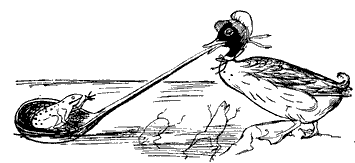
It's not a poem I know and I would guess that dolomphious is another Lear invention. Anyway here is the spoon, which looks more like a ladle - with holes. Another topic some time - ladles I mean.
Mind you I fear that this post may be yet another
"dernier cri in shark-jumping foodie bullshit" Oliver Thring - The Guardian
- a sentiment that came from that meal where they taste tested all those spoons. And a tiny bit desperate for inspiration on my part?
















Comments